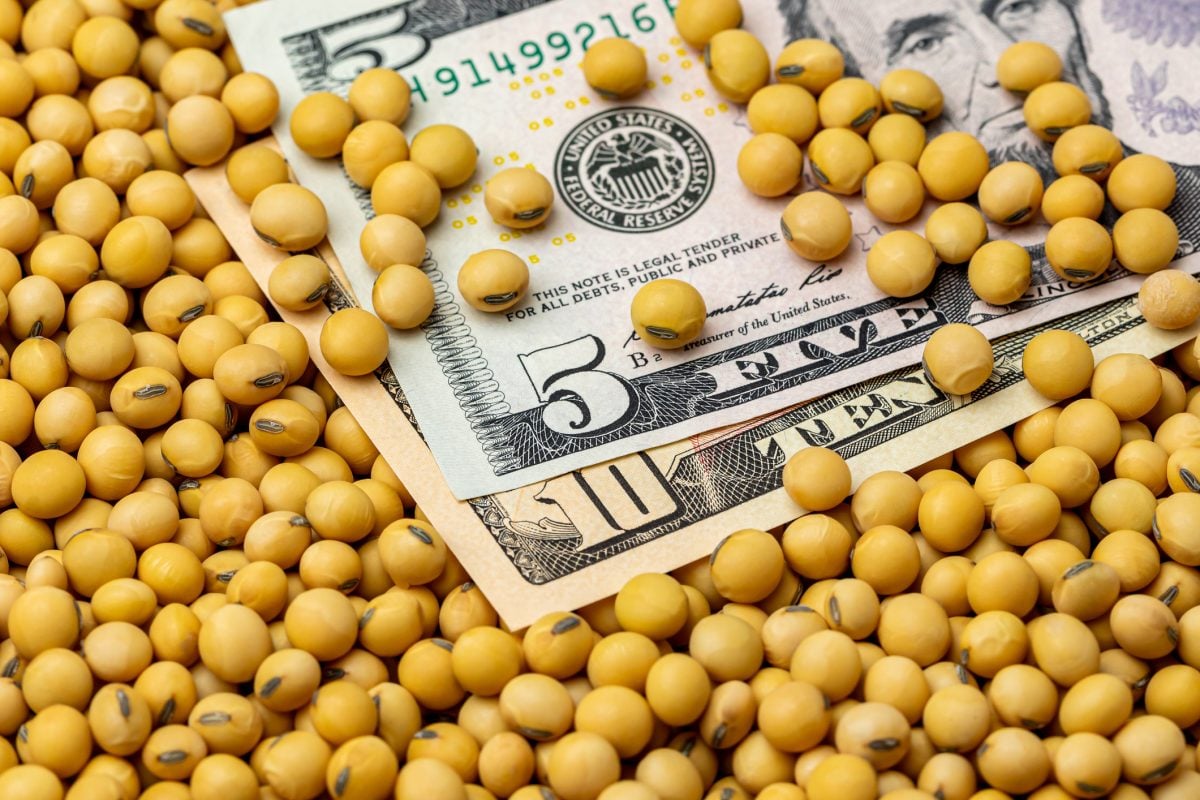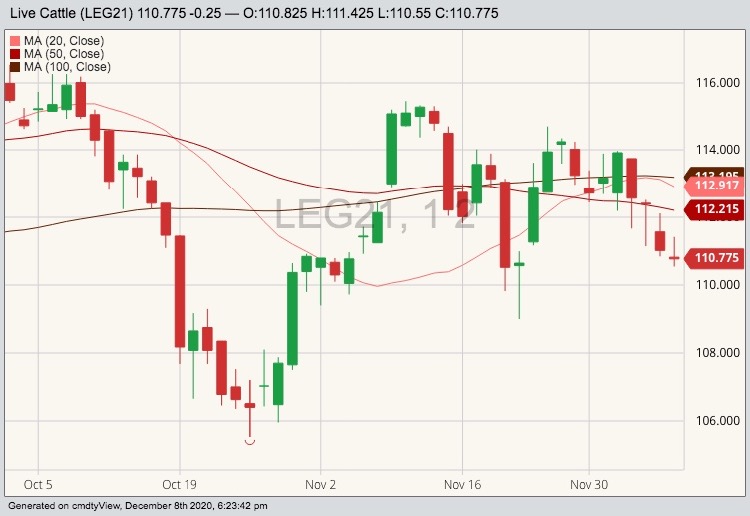Chicago | Reuters — U.S. live cattle futures fell for a fourth straight session on Tuesday as cash cattle traded lower at southern U.S. Plains feedlot markets and as wholesale beef prices continued a steep seasonal slide.
Declines, however, were limited by bargain buying as some traders viewed the recent drop in cattle prices as overdone.
Actively traded Chicago Mercantile Exchange February live cattle futures touched a 2-1/2 week low, and ended down 0.25 cent at 110.775 cents/lb. (all figures US$). CME January feeder cattle futures ended down 0.225 cent at 137.575 cents/lb., while deferred contracts edged higher.
Read Also

U.S. grains: Soybeans set 15-month high on U.S.-China trade deal hopes
Chicago soybean futures reached their highest in 15 months on Tuesday, briefly topping $11 a bushel on optimism that the U.S. could reach a trade deal with China as leaders from both countries are expected to meet in South Korea on Thursday.
Cattle markets have stumbled as rising U.S. coronavirus infections have fueled some concerns about supply chain disruptions similar to those seen early in the pandemic.
Wholesale values have also eroded with expanding closures of restaurants and other food service outlets, although prices remain slightly above year-ago levels.
“Wholesale beef is still breaking. End users are now procuring cattle for that post-holiday period and that lower demand is a little concerning,” said Rich Nelson, chief strategist at Allendale Inc.
Feedlot cattle in Texas traded on Tuesday at $108/cwt, down $2 from a week ago.
The choice boxed beef cutout dropped $5.78, to $225.02/cwt, on Tuesday, while select cuts fell $4.06, to $205.42/cwt, according to U.S. Department of Agriculture (USDA) data.
Lean hog futures rebounded on Tuesday after four straight lower sessions in a technical and bargain-buying bounce, and as the cash pork cutout value edged higher.
Benchmark February lean hog futures contract touched a 2-1/2 week low on Tuesday, but settled 0.65 cent higher at 65.6 cents/lb. The contract broke through technical chart resistance at its 100-day moving average.
— Karl Plume reports on agriculture and ag commodities for Reuters from Chicago.












